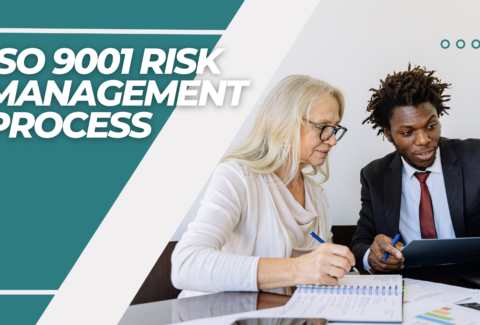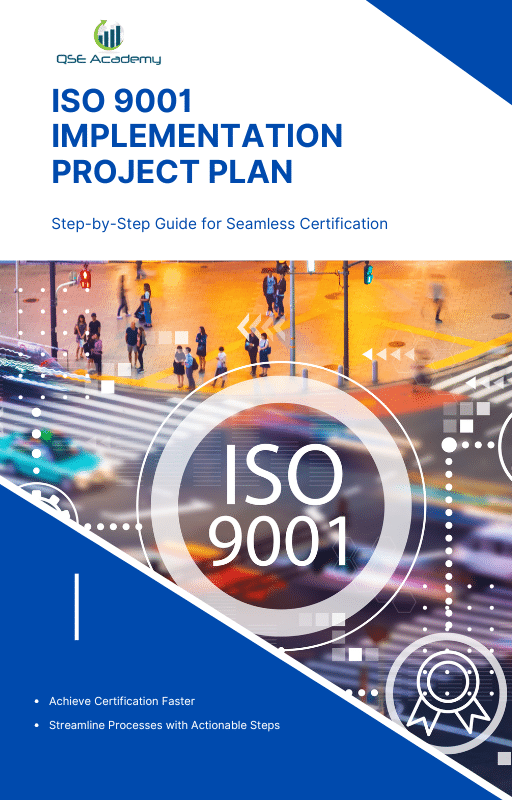What are the primary requirements of ISO 9001?
What are the primary requirements of ISO 9001?
Have you ever wondered what makes some businesses stand out for their consistent quality and customer satisfaction? The secret often lies in their ability to meet international standards, and one of the most recognized is ISO 9001. But what exactly does it mean to meet the requirements of ISO 9001? Let’s break it down together.
ISO 9001 is all about quality management—it’s like having a playbook that ensures your business runs smoothly while keeping customers happy. It’s not just about ticking boxes; it’s about building a system that helps your business grow, improve, and deliver consistent results. Whether you’re running a small startup or a large corporation, understanding the requirements of ISO 9001 is your first step toward achieving that goal.
In this article, we’re going to explore what these requirements are in simple terms. No jargon, no overwhelming technical details—just a friendly guide to help you understand what’s needed and why it matters. So, if you’re ready to take the mystery out of ISO 9001 and see how it can help your business thrive, let’s dive in!
What Is ISO 9001 and Why Does It Matter?
Let’s start with the basics—what exactly is ISO 9001, and why is everyone talking about it? At its core, ISO 9001 is an international standard that sets out the requirements of a quality management system (QMS). Think of it as a framework or guidebook designed to help businesses deliver consistent quality, improve their processes, and keep their customers happy.
Now, you might be wondering, “Do I really need to understand the requirements of ISO 9001?” The short answer is yes! Whether you’re running a coffee shop, a tech startup, or a manufacturing company, the principles of ISO 9001 apply across industries. It’s all about making sure your business is organized, efficient, and always looking for ways to get better. Sounds like something every business could use, right?
But here’s the cool part—it’s not just about your business. Meeting the requirements of ISO 9001 also sends a strong message to your customers and partners. It tells them, “We care about quality, and we’re committed to doing things right.” That kind of trust can set you apart in a crowded marketplace.
In short, ISO 9001 isn’t just a list of rules to follow—it’s a tool to help your business thrive. By understanding and implementing the requirements of ISO 9001, you’re building a foundation for success that benefits not just your company but everyone you serve. Doesn’t that sound like a win-win? Let’s keep exploring to see what these requirements are and how they can work for you!
The Primary Requirements of ISO 9001
Now that we know why ISO 9001 matters, let’s dig into what it actually requires. Don’t worry—this isn’t as intimidating as it might sound! The requirements of ISO 9001 are like building blocks that help you create a system to ensure your business consistently delivers quality. Let’s go through them step by step.
1. Context of the Organization
Think of this as getting to know yourself and your business better. To meet the requirements of ISO 9001, you need to take a step back and look at the big picture. This means understanding the internal and external factors that affect your business, identifying who your key stakeholders are (like customers, employees, and suppliers), and defining the scope of your quality management system (QMS).
It’s like mapping out your starting point so you know exactly where you stand. Without this clarity, it’s hard to move forward effectively.
2. Leadership Commitment
Here’s the deal: leadership plays a massive role in ISO 9001. To meet the requirements of ISO 9001, top management needs to be fully on board. They’re responsible for setting the tone and making sure quality is a priority across the entire organization.
This includes defining a clear quality policy, assigning roles and responsibilities, and creating an environment where everyone feels motivated to contribute to the QMS. It’s not just about words—it’s about actions that show a real commitment to quality.
3. Planning for the QMS
You’ve probably heard the saying, “Failing to plan is planning to fail,” right? That’s exactly why planning is such a big part of the requirements of ISO 9001. This step focuses on identifying risks and opportunities, setting measurable quality objectives, and planning how to achieve them.
For example, if you run a bakery, a quality objective might be reducing the number of customer complaints about product freshness. Your plan could include sourcing ingredients more efficiently or improving packaging to keep products fresher for longer. The goal here is to create a roadmap for success.
4. Support
No system can work without proper resources, and that’s where this requirement comes in. ISO 9001 emphasizes the need for things like competent staff, clear communication, and effective documentation.
But don’t worry—meeting the requirements of ISO 9001 doesn’t mean drowning in paperwork. It’s all about making sure your team has what they need to do their jobs well and that critical information is easy to find and use.
5. Operational Requirements
This is the heart of your QMS—the day-to-day processes that help you deliver quality products or services. To meet the requirements of ISO 9001, you’ll need to focus on areas like customer communication, product design, supplier management, and production controls.
For example, if you manufacture toys, this step ensures you have clear processes for designing safe, high-quality products, sourcing reliable materials, and meeting delivery timelines. It’s all about keeping things running smoothly while ensuring your customers are happy.
6. Performance Evaluation
How do you know if your QMS is working? That’s where performance evaluation comes in. The requirements of ISO 9001 include monitoring, measuring, and analyzing your processes to make sure everything is on track.
This might involve conducting internal audits, collecting customer feedback, or reviewing your performance against those quality objectives you set earlier. Think of it as checking the pulse of your business to see how it’s doing and where you can improve.
7. Improvement
Last but definitely not least, ISO 9001 is all about continuous improvement. Meeting the requirements of ISO 9001 isn’t a one-and-done deal—it’s an ongoing process. This means looking at what’s working, addressing what’s not, and always striving to do better.
For instance, if a process isn’t as efficient as it could be, take corrective action to fix it. Over time, these small improvements add up to big results, helping your business grow and stay competitive.
Each of these requirements of ISO 9001 might seem like a lot at first, but when you break them down, they’re just common-sense practices that help your business run better. And the best part? They work together to create a system that’s built for success. Ready to see how these requirements can transform your business? Let’s keep going!
Benefits of Meeting the Requirements of ISO 9001
So, we’ve talked about what the requirements of ISO 9001 are—but what’s in it for you? Why should your business put in the time and effort to meet these standards? Let’s explore the benefits, and spoiler alert: they’re worth it!
1. Happier Customers, Stronger Relationships
Let’s face it—your business doesn’t exist without your customers. One of the biggest perks of meeting the requirements of ISO 9001 is improving customer satisfaction. When you consistently deliver quality products or services, your customers notice. They’re more likely to trust you, recommend you, and keep coming back.
For example, if you’re running an e-commerce store, implementing ISO 9001 ensures every package is shipped on time and in perfect condition. That level of reliability builds loyalty—and loyal customers are the best kind, right?
2. Streamlined Processes Save Time and Money
Have you ever felt like your business processes are all over the place? Meeting the requirements of ISO 9001 helps you get everything organized. It’s like decluttering your home—you find what’s unnecessary, focus on what works, and create systems that save time and reduce waste.
Say goodbye to duplicated efforts, missed deadlines, and unnecessary costs. With a solid quality management system in place, your operations become smoother, faster, and more efficient.
3. A Competitive Edge in the Marketplace
Let’s be honest—standing out in a crowded market is tough. That’s where ISO 9001 comes in. Meeting the requirements of ISO 9001 shows potential customers and partners that you’re serious about quality. It’s like a badge of honor that says, “We’re reliable, professional, and ready to deliver.”
This can open doors to new business opportunities, especially in industries where ISO 9001 certification is a must-have. Whether you’re bidding for contracts or expanding into new markets, this can give you the edge you need to win.
4. A Culture of Continuous Improvement
One of the coolest things about ISO 9001 is that it’s not just a one-time effort. Meeting the requirements of ISO 9001 creates a culture where improvement becomes second nature.
Imagine a team that’s always asking, “How can we do this better?” That mindset leads to innovation, adaptability, and long-term success. Over time, these small, ongoing improvements can transform your business and keep you ahead of the competition.
5. Improved Employee Engagement
A happy, motivated team makes all the difference, and ISO 9001 helps with that too. When you meet the requirements of ISO 9001, your employees have clear roles, responsibilities, and goals. They understand how their work contributes to the bigger picture, which can lead to greater job satisfaction.
Plus, when things are running smoothly and efficiently, your team has more time to focus on what really matters—delivering great results.
6. Reduced Risks, More Opportunities
Finally, meeting the requirements of ISO 9001 helps you identify and address risks before they become problems. By proactively managing risks, you’re not just protecting your business—you’re also setting yourself up to seize new opportunities.
For example, if you’re a supplier, having ISO 9001 certification might make you the first choice for clients looking for reliable, high-quality partners. That’s a win you don’t want to miss!
Final Thoughts on the Benefits
The requirements of ISO 9001 aren’t just about compliance—they’re about creating a system that helps your business thrive. From happier customers to smoother operations and a stronger team, the benefits are endless.
Sure, it takes some effort to get there, but think of it as an investment in your future. Once you meet the requirements of ISO 9001, you’ll wonder how you ever operated without it! Ready to take the next step? Let’s keep the momentum going!
Final Thoughts on the Requirements of ISO 9001
By now, you’ve got a clear picture of what the requirements of ISO 9001 are and why they matter. But let’s take a moment to reflect and wrap things up in a way that ties it all together.
The requirements of ISO 9001 aren’t just rules or a checklist—they’re practical steps to help your business improve and grow. They encourage you to take a closer look at your processes, understand your customers better, and build a system that ensures consistent quality. Whether it’s defining your organization’s context, empowering leadership, or fine-tuning your operations, these requirements are designed to work for businesses of all shapes and sizes.
But here’s the best part: implementing the requirements of ISO 9001 isn’t just about meeting a standard—it’s about creating real, meaningful change in your business. It’s about reducing inefficiencies, fostering teamwork, and ultimately delivering products or services that your customers love. Who wouldn’t want that?
If you’re feeling overwhelmed, don’t worry—that’s normal. Starting with ISO 9001 can seem like a big task, but the rewards are worth the effort. Break it down into manageable steps, get your team involved, and keep your focus on the big picture: a better, stronger business.
So, what’s next for you? Whether you’re just starting to explore ISO 9001 or already working on meeting the requirements, take it one step at a time. Remember, it’s not just about achieving certification—it’s about embracing a mindset of quality and continuous improvement.
Meeting the requirements of ISO 9001 is a journey, and every step you take brings you closer to a business that’s built for long-term success. If you’re ready to take that first step, you’re already on the right path. You’ve got this!
Looking for More Resources on ISO 9001?
Looking for ISO 9001 Resources Tailored to Your Industry?
If this article helped clarify ISO 9001, take the next step with our industry-focused tools designed to simplify your certification journey:
📦 ISO 9001 Documentation Kits by Industry: Whether you’re in manufacturing, construction, consulting, or healthcare — we have complete, ready-to-use documentation tailored for your sector.
🎓 Online ISO 9001 Training: Learn how to implement ISO 9001 effectively with our easy-to-follow video lessons, real-world examples, and practical exercises.
📋 ISO 9001 Checklist: Download our step-by-step checklist to ensure your QMS meets all the 9001:2015 requirements from start to finish.
These resources are crafted to save you time, reduce stress, and help you achieve certification with confidence. Choose your industry and start now!

make ISO standards less intimidating and more approachable for everyone.
Whether it’s ISO 9001, ISO 22000, or the cosmetics-focused ISO 22716,
I’ve spent my career turning complex jargon into clear, actionable steps
that businesses can actually use. I’m not here to call myself an expert—I prefer “enthusiast” because I truly love what I do.
There’s something incredibly rewarding about helping people navigate food safety and quality management systems
in a way that feels simple, practical, and even enjoyable.
When I’m not writing about standards, you’ll probably find me playing Piano 🎹, connecting with people, or diving into my next big project💫.
- I’m an engineer specialized in the food and agricultural industry
- I have a Master’s in QHSE management and over 12 years of experience as a Quality Manager
- I’ve helped more than 15 companies implement ISO 9001, ISO 22000, ISO 22716, GMP, and other standards
- My clients include food producers, cosmetics manufacturers, laboratories, and service companies
- I believe quality systems should be simple, useful, and efficient
- Outside of work, I play piano and love learning something new every day
Let’s make ISO less about stress and more about success! 🙏






















